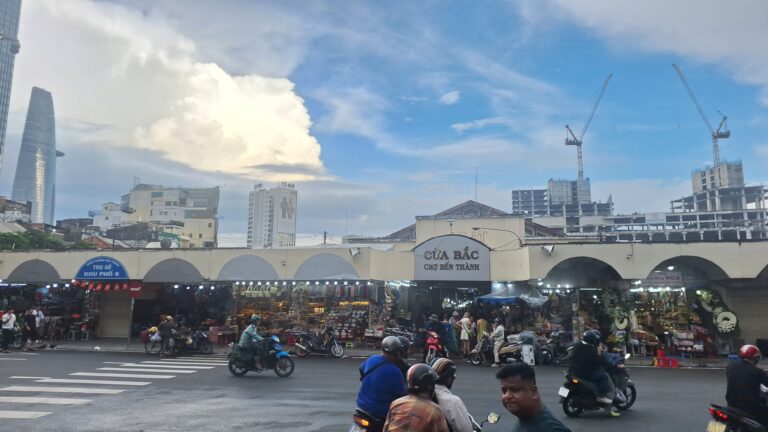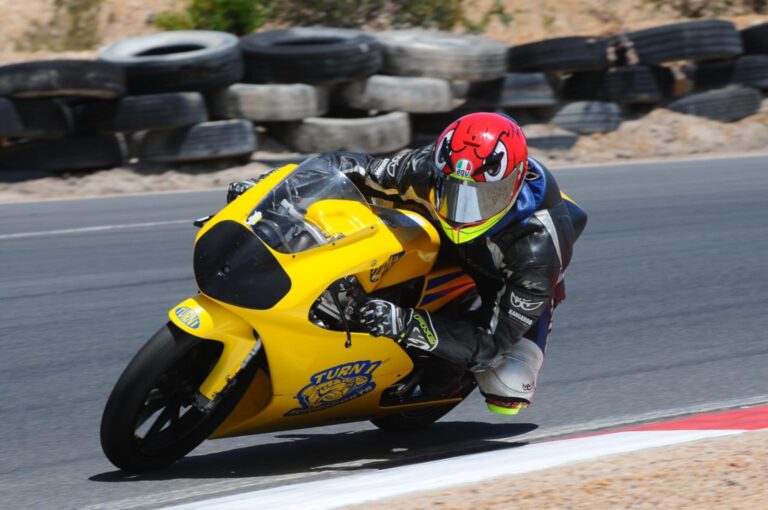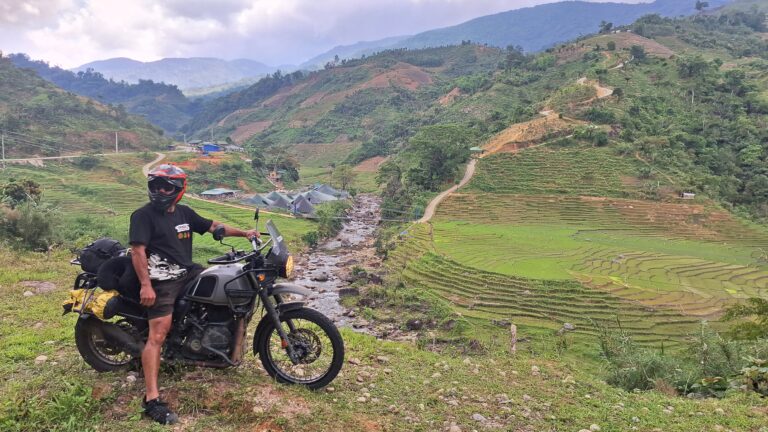
Home > Blog > Destinations > Motorbiking Vietnam’s UNESCO World Heritage Sites
Motorbiking Vietnam’s UNESCO World Heritage Sites
Share:
- Published:

Vietnam is blessed with stunning landscapes, deep history, and well-maintained roads — all of which mean it’s one of the best places in the world for a motorcycle adventure. But planning a trip can be tricky with so many things to do. So what would a good history plus landscape bucket list look like?
A good start would be to look to UNESCO World Heritage Sites as highlights of a motorcycle adventure, which is what we’ve got here today. Onyabike Adventures loves to visit these sites whenever we can, and several of the below top-tier destinations make their way onto many of our tours.
Whether you’re looking to book a guided tour with us or are keen on doing your own thing, the following are the seven UNESCO World Heritage Sites in Vietnam — and how to enjoy them on two wheels the right way.
Ready and revved up?
Table of Contents
Hoi An and My Son
Hoi An Ancient Town

Hoi An has been a UNESCO World Heritage Site since 1999, as it’s a beautifully preserved trading port dating back to the 15th-19th centuries. Hoi An’s enchanting blend of history, culture, and scenic countryside makes it a highlight of any motorbike tour. The short, picturesque rides and vibrant atmosphere offer a perfect mix of exploration and relaxation.
Its colorful shops, buzzing street life, bustling tourist area, and fusion of Vietnamese, Chinese, and Japanese architecture with lantern-lit streets make it unique. Combine that with affordability, easy transportation, delicious food, rice fields, rivers, and top tier beaches, and you’ve got a motorbike destination worth stopping at.
Onyabike Adventures calls Hoi An home for a number of reasons, and its centralized location is certainly one of them. Located in Quang Nam province a half hour ride south of Da Nang, it’s easily accessible by plane, bus, motorbike, or car. Many of our tours involve Hoi An in one way or another, since the rides start there. For example, check out our Explore Central Vietnam 6-day tour.
Hoi An’s old town is pedestrian-only, but the surrounding areas offer a broad network of flat, scenic roads perfect for motorbike exploration. Rural paths around Hoi An lead to fishing villages, craft workshops, and beaches like An Bang, Cua Dai, or Hidden Beach, allowing riders to explore beyond the tourist hub. The area’s compact size may belie the wide amount of things to do. Hoi An is a versatile stop for both short visits and long-term stays.
Hoi An Highlights
- Old Town: Hoi An’s old town needs to be explored on foot. Park your bike near Hoi An market or any street towards the river. Visit the Japanese Covered Bridge, Tan Ky House, and Quan Cong Temple. Grab a coffee or beer at a riverside cafe and take in some world-class people-watching.
- Beaches: A 5-km ride from the town center, An Bang Beach is a long stretch of beach that features a number of restaurants, a few late-night bars, and coffee shops to relax at. Hidden Beach and Cua Dai Beach are well-kept, less busy, and quiet at night. If you’re here in the warm season, plan at least a day on the beach.
- Craft Villages: Ride to Kim Bong carpentry village, Thanh Ha pottery village, or Coconut Village (each ~3–5 km away) to see artisans at work, crafting furniture or traditional ceramics. Coconut village offers boat rides in the eco-tourism fashion.
- Tailor shops: Hoi An is famous for its tailor shops, so consider stopping to have clothes made. Suits, shirts, pants, shoes, and about anything else you can imagine can be custom-made at a fraction of the cost in many other countries.
- Night Market: Show up in the evening to see Hoi An’s famous lanterns glowing along the Thu Bon River, creating a unique ambiance for wandering and dining.
- Local food: Hoi An has a number of unique local dishes. Be sure to try Cao Lau (thick noodles with roast pork in broth), White Rose Dumplings, Nem Lui (minced meat skewers with peanut dipping sauce), and grilled local seafood.
The route
Hoi An is remarkably easy to find. From Da Nang, take the DT607 coastal road, a 30-45 minute straight shot. The AH1 highway is also an option but it’s far less scenic. Local roads around Hoi An are flat and easy to navigate, though the city center can get convoluted as road names often change.
Tips
Hoi An welcomes tourists year round, though the best time of year for weather is between February-May. The summer can be hot, but that simply means more beach time. October-December can bring storms and heavy rains, and December is often the rainiest month of the year despite what weather sites tell you.
Riders with Onyabike Adventures will appreciate that, as this is our hometown, we’re pretty familiar with the place. We’re more than happy to help with recommendations for restaurants, pubs, and so on — just ask.
My Son Sanctuary

My Son Sanctuary contains some of the oldest ruins in Vietnam. An ancient Hindu temple complex built by the Cham between the 4th and 13th centuries, My Son was designated a World Heritage Site in 1999. Though heavily damaged in the war, much of the complex still stands. These brick-and-stone ruins dedicated to the god Shiva are set in a lush jungle valley, offering a glimpse into Vietnam’s ancient past. Its remote location and scenic approach make it a rewarding motorbike destination.
The 45-km ride from Hoi An or Da Nang winds through verdant rice paddies, small villages, and rolling hills, offering a peaceful escape from busy tourist hubs. Visiting the complex itself is stepping back in time — you’re looking at the ruins of not just ancient Vietnam but a previous civilization in the now-extinct Cham Empire.
The roads to My Son are generally well-maintained, though some sections may be a bit narrow. My Son’s compact size and quiet atmosphere make it ideal for a half-day trip — especially in the summer, when the afternoons can get very hot. My Son is best paired with a longer stay in Hoi An or Da Nang, whether checking out beaches or enjoying tourist areas.
Visitors who don’t want to drive themselves can book a comfy ride: Check our Scenic Route to My Son Pillion Tour.
My Son Highlights
- Temple Ruins: Explore the intricately carved towers, some still standing despite centuries of weathering and war damage. The jungle setting adds a sense of discovery.
- Cultural Performances: Catch traditional Cham dance shows at the visitor center (check schedules in advance), which bring the site’s history to life.
- Scenic Rides: The route from Hoi An passes green fields, local markets, and small bridges, perfect for photo stops or a quick coffee break.
- Nearby Attractions: Combine your visit with a ride to Da Nang’s Marble Mountains (40 km) or Hoi An’s craft villages for a full day of exploration.
The route
From Hoi An, take DT607 to DT609, which should take around 1 hour. Park near the entrance.
Tips
Before diving into the complex, check out article on My Son for full details on what to expect and when. This includes timing. If you’re coming in late, there is a small motel nearby which is a decent place to spend the night. Food is available in the area.
If you’re coming in the hot part of the year (March-September), aim for an early morning visit, anywhere from 6-8 AM. The afternoons can get very hot as My Son is in a boxed-in valley that gets little breeze.
Respect the ruins by not climbing on them and minimizing touching them. They’ve already been through a lot.
Hanoi and Ha Long Bay
Thang Long Imperial Citadel

The Imperial Citadel of Thang Long in Hanoi is a historical treasure dating back to the 11th century, when the city itself was called Thang Long. The citadel itself was then the heart of the Ly Dynasty. Its ancient walls, archaeological remains, and modern museums shine a spotlight on Vietnam’s medieval history, which runs quite deep. Located in the heart of Hanoi, Vietnam’s capital, it’s an ideal starting point for a motorbike tour of northern Vietnam.
Although Hanoi’s traffic can be intense — to put it lightly — the Imperial Citadel’s central location makes it a convenient starting location for exploring the rest of the city as well as other destinations in the region. Motorbiking is absolutely the way to get around Hanoi, as riding a bike allows you to sneak around pesky cars and taxis. The citadel’s historical significance and proximity to landmarks like Hoan Kiem Lake and the Old Quarter make it a great anchor for a northern Vietnam tour.
Thang Long Citadel Highlights
- Citadel sites: Explore the Doan Mon Gate, Hanoi Flag Tower, and archaeological displays showcasing artifacts from the Ly, Tran, and Le dynasties.
- Night tour: The “Decoding Thang Long” evening tour offers a unique experience with storytelling, lights, and historical reenactments.
- Nearby attractions: Ride to the Temple of Literature, Ho Chi Minh Mausoleum, or Hoan Kiem lake, all within 2-5 km of the citadel.
- Rural escapes: Use Hanoi as a base to ride to Trang An (~90 km) or other northern sites, where quieter roads offer a peaceful contrast to the city’s chaos.
The route
The Citadel is centrally located in Hanoi. Follow Google Maps and you’ll be sure to find it.
Tips
Hanoi’s attractions are all within 5 kilometers, making them doable to explore within a day. However, because the city is so large and has so much to offer, many will want to spend more time in the urban jungle not only visiting the major tourist sites but digging into the local coffee and restaurant scene, which has a lot to offer. Tay Ho offers many Western-style amenities and accommodation, so consider that area for long-term stay.
October-April offers cool weather, which can actually get quite chilly. This surprises many first-time visitors to the region. Temperatures can get and stay down in the 10-15 C range, which is compounded by the lack of insulation and heating in many buildings. Bring a jacket.
Ha Long Bay

The world-famous Ha Long Bay, recognized as a UNESCO World Heritage Site in 1994, is a seascape of over 1,600 limestone islands poking up from emerald waters. A true wonder of the world, it’s one of Vietnam’s most iconic destinations. While the bay itself is explored by boat, the surrounding areas offer some of the country’s most scenic motorbike routes, making it a must-visit for riders.
The journey to Ha Long Bay from Hanoi covers approximately 165 kilometers and takes you through lush countryside, coastal roads, and small fishing villages. The roads in Quang Ninh province are well-paved, offering stunning views of karst peaks and the Gulf of Tonkin. For a deeper adventure, you can ride to Cat Ba Island via a short very trip, where you’ll find quieter roads, beaches, and the biodiverse Cat Ba National Park.
We offer a Ha Long Bay trip as an add-on for any of our tours. If you’re starting or finishing a ride in Hanoi, simply ask us for details. We like going there, too.
Highlights
- Cat Ba Island: Explore the national park’s jungle trails or relax on beaches like Cat Co. The island’s laid-back vibe is perfect for a rest day.
- Boat tours: Pair your ride with a boat trip to explore caves like Sun Sot or a number of hidden lagoons.
- Cultural stops: Visit floating villages or the Quang Ninh Museum in Ha Long City for insights into local history.
The route
We don’t recommend riding directly from Hanoi to Ha Long as the roads can be congested and dangerous. Many of the highways also exclude motorbikes. However, riders who are coming from the north — for example, on our Ha Giang Loop trip — can approach Ha Long from Lang son via the QL4B or a number of smaller roads that wind through hills and villages.
Tips
February-April or September-November offer clear skies and the coolest temperatures. June-August can bring rainy weather, so plan on wet-weather gear like ponchos.
Check ferry schedules in advance as they run frequently but can be crowded.
Keep trash bags on hand to collect your own trash — and that of others — so it doesn’t go in the bay, as pollution can be a problem.
Trang An Landscape Complex, Ninh Binh

Known as the “Inland Ha Long Bay,” Trang An Landscape Complex in Ninh Binh province is an otherworldly blend of limestone karsts, emerald rivers, ancient temples, and rice paddies. Its dramatic scenery and historical significance make it a standout destination. The area’s compact size, serene countryside, and proximity to Hanoi make it an easy choice to visit for any motorbike travelers in the area.
Trang An is Vietnam’s youngest UNESCO World Heritage Site, designated in 2014. Its flat, well-maintained roads wind through ride paddies and steep valleys, offering beginner-friendly riding with jaw-dropping views. At just 90 km south of Hanoi, it’s perfect for a day or weekend trip or as a stop in part of a larger northern Vietnam motorcycle tour. Motorbiking allows you to explore not only Trang An’s boat routes but also nearby attractions like Hoa Lu (Vietnam’s 10th-century capital, Tam Coc, and Bich Dong Pagoda. The quiet rural paths, dotted with water buffalo, make for a bucolic scene that’s in complete contrast to Hanoi’s hustle.
Riders who want to see Ninh Binh can join us on a northern tour, a custom tour, or our North to South Classic.
Trang An Highlights
- Boat tours: A rowboat ride through Trang An’s waterways is a must, passing through caves like Sang Cave and past temples nestled among karst hills. The 2-3 hour tour is a perfect way to chill out after a ride.
- Bich Dong Pagoda: A short 5-km ride from Trang An, this three-tiered cave temple offers stunning views from its hillside location, especially at sunset.
- Hoa Lu Ancient Capital: Check out the historic temples of the Dinh and Le dynasties, a 10-minute ride from Trang An, for a dose of Vietnam’s early history.
- Scenic stops: You’ll likely want to take lots of photos, as this is one of the most photogenic spots in the country. The rice fields are particularly photogenic in spring, when they’re approaching harvest time.
The route
From Hanoi, take the DT378 road south along the Red River. The DT378 links up with QL39A in Tien Thang, which you can follow to a further south turn at the intersection with the CT16 to cross the river. Continue south along De Song Hong road and finally take the last south at DT487 towards Nam Dinh before linking up with the QL10 towards Ninh Binh.
Tips
The best time to visit is from November-April, with dry weather and blooming rice fields towards the end of the season, making for excellent photography. May-August can be hot and humid, so start early to avoid the heat.
Be sure to bring cash. Trang An’s boat tour offices can take credit cards, but small sites are almost guaranteed to be cash-only zones. This includes Hoa Lu and any roadside stalls.
Dress respectfully in temples and in historic sites. That means covering your shoulders and knees, within reason: It’s recommended to not wear a singlet or vest to a temple.
Be sure to gas up when possible, as gas stations can be few and far between — or, alternatively, may close early or at random times.
Hue Monument Complex

The Complex of Hue Monuments, the political and cultural heart of the Nguyen Dynasty (1802-1945) was the first UNESCO World Heritage Site designated in Vietnam, earning the distinction in 1993. This sprawling, 500-hectare site includes the Imperial City, Forbidden Purple City, royal tombs, and pagodas along the Perfume River. Its combination of historical depth and beautiful scenery make it a must-see destination for motorcycle adventure riders in Vietnam.
Hue’s flat terrain and network of roads connecting its monuments make it perfect to visit by motorbike. The spread-out nature of the complex, with sites like the Imperial Citadel and distant royal tombs, means motorbike travel is the best way to explore efficiently — all while enjoying river views and rural landscapes.
Hue itself is a busy, modern town with a unique cuisine and history. The region around the city offers a number of attractions in addition to the monument complex, including the Hai Van Pass, and some beautiful coastal roads.
Hue Highlights
- Imperial Citadel: Explore the walled city, including the ornate Noon Gate, Thai Hoa Palace, and remnants of the Forbidden Purple City, which was once reserved for the royal family.
- Royal Tombs: Ride to the elaborate tombs of Emperors Minh Mang, Khai Dinh, and Tu Duc, each set in lush gardens and reflecting unique architectural styles.
- Thien Mu Pagoda: A short 5-km ride along the Perfume River, this seven-story pagoda is a Hue icon, offering peaceful views and historical significance.
- City of Ghosts: Outside of Hue, riding southeast along the coast, riders can find a major tomb complex with ornate and intricately designed tombs.
- Coastal rides: Enjoy riding some of the most beautiful coastal roads in the country, winding through one of the world’s largest lagoon systems.
- Hai Van Pass: southeast of the city, on the way to Da Nang, enjoy riding one of the best mountain and coastal roads in the world.
The route
Coming north from Da Nang, take the Deo Hai Van (Hai Van Pass) road going over the mountain rather than the AH1 going through the tunnel. This will be one of the highlights of any trip in the region, so don’t miss out on this opportunity. Driving through Lang Co, stop at one of the lagoon-side floating restaurants and dig into some grilled mussels and cold beer. Tag back up with the QL1 on the way up to Hue, or take the beautiful coastal QL49B along the lagoon side. Check out our article on The Best Coastal Routes in Vietnam for more info.
Tips
Hue itself is known for its cuisine, so get adventurous and try some of the local specialties. Com Hen or Bun Hen (rice or noodles with clams) are a local favorite, as are a number of bite-sized dishes like banh beo and banh loc. Check out our article on Vietnam’s Best Street Food for more info.
The best time to visit Hue is around the same as Hoi An — that is, between February and May. The summer can be lovely but hot, so be prepared to drink a lot of water and seek out fans. September-December can bring downpours, as Hue’s geography makes it perfectly suited to receive loads of rain from northeastern monsoons.
When checking out tombs, keep Google Maps handy as not all tombs are well-marked. Hue’s open sites offer little shade, so keep water on hand and eat more juicy fruit than you think you might need to.
Phong Nha-Ke Bang National Park

Known for its otherworldly karst formations, world-famous caves, lush jungles, stunning vistas, and bucolic lifestyle, Phong Nha-Ke Bang National Park is one of Vietnam’s best-preserved gems. Located in Quang Binh province, this geological masterpiece boasts 300 caves including Son Doong, the world’s largest cave. Phong Nha became a UNESCO Heritage Site in 2003.
The underground river systems that lead into other caves like Dark Cave make for fascinating visits and stop-offs from a motorbike tour route that winds through some of the best roads in the country. The park’s remote location and rugged terrain make it a thrill ride for motorcycle enthusiasts, which is why we return here again and again.
The roads wind through limestone peaks, rice fields, and rural villages, offering an exhilarating ride for those seeking adventure. The Ho Chi Minh Trail West (QL14) from Khe Sanh provides a scenic, less-traveled route, with breathtaking mountain and forest views. Within the park, local roads connect key caves like Phong Nha Cave and Paradise Cave, making it easy to explore multiple sites in a day. The area’s remoteness adds some thrill while keeping traffic minimal — a great balance for those looking to rip the throttle.
Phong Nha appears on many of our tours, including The Highlights of Central Vietnam and Victory Ride to Phong Nha.
Phong Nha Highlights
- Phong Nha Cave: A boat tour along this river takes you into a cave with well-preserved stalactites and stalagmites, lit with natural light from the entrance. Explore the cave on foot and return to your boat to get taken back to town.
- Paradise cave: A short 20-km ride from town, this cave’s vast chambers and intricate formations make it live up to its name.
- Dark cave: Take a zipline over a turquoise river into a cave with a perfect mud bath towards the end. Enjoy some time in the pristine river afterwards with more ziplines and diving areas in a steep, jungle-clad valley, with a nearby restaurant.
- Adventure tours: Multi-day cave expeditions and jungle trekking are available to more remote sites like Tu Lan or Son Doong, which require advanced booking.
The route
From the south, the most scenic route is to catch the Ho Chi Minh Road West from Khe Sanh (shown in map). For those looking to take a faster route, take the Ho Chi Minh Road East from Hue instead. Riders coming from the north can also use the Ho Chi Minh Road.
Tips
The caves are sometimes closed in the wet season. Downpours can occasionally make them hazardous for understandable reasons, so they can be shut off for tourist safety. Jungle treks can be cancelled for the same reason during the rainy season.
If you’re visiting Nuoc Mooc or Dark Cave, take swim clothes as you’ll most certainly want to swim in the pristine water.
Those looking to take a jungle hike should bring long pants, socks, and proper trekking shoes as leeches are common in the area.
Conclusion
Visiting Vietnam’s UNESCO sites on a motorbike is one of the country’s great joys, with guaranteed unforgettable memories. Rev up and get into the thrill of the open road, the stunning scenery, and the unique culture. When the destination and the journey are equally appealing, you’ve got the ride of a lifetime.
Enjoy your ride in style, too, combined with comfy lodgings, good food, and knowledgeable guides. Got questions about the tours and how we run things? Want to know how we handle health and safety, for example? Reach out to us for full details and we’ll fill you in.
Related Posts
Recent Posts






